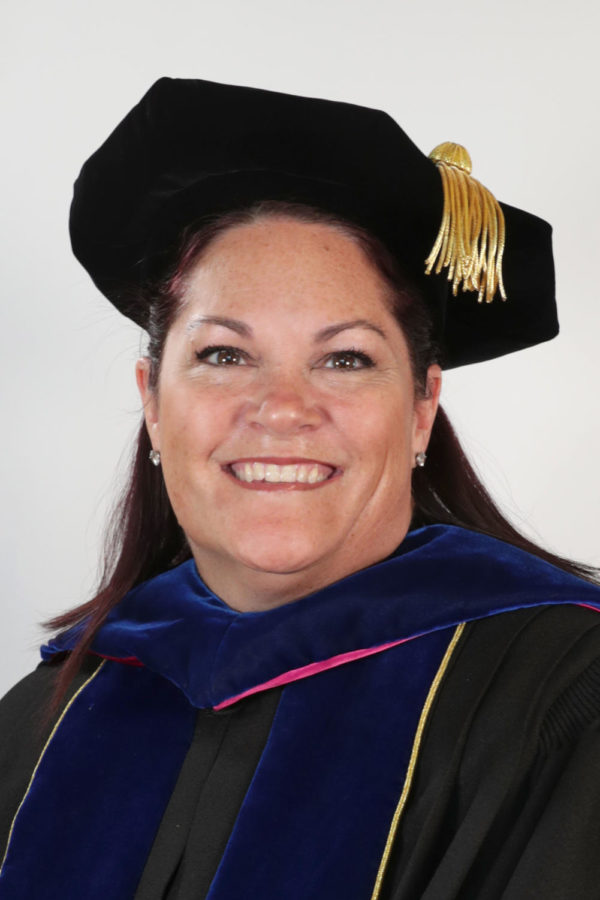 Mercyhurst College’s solar panels give enough energy daily to power the maintenance building
Mercyhurst College’s solar panels give enough energy daily to power the maintenance building
More than anything else, the shiny and sleek solar panels on Mercyhurst College’s front lawn act as a microcosm of the world’s looming energy crisis.
Alone, they and solar power as a whole just aren’t enough.
Since its installation in November 2007, the 3-kilowatt panel system has generated solar energy that feeds into the local electric grid, typically producing enough daily energy to power the college’s maintenance building just south of East 38th Street.
The college’s Green Team received a $15,000 grant in 2006 from the Solar Scholars program, a sum that Mercyhurst then matched to invest in the panel’s purchase and installation from North Coast Energy Systems.
Mercyhurst decided to match the grant total and did not look for a financial return on the initial installment, according to associate chemistry professor Dr. Ron Brown, who was instrumental in bringing solar power to campus.
“The college ended up looking at it more as an educational investment and not so much as ‘Oh, how can we get this money back?'” Brown said.
Tom Billingsley, Mercyhurst’s executive vice president for administration, said the panel has provided $746 in energy cost savings through September.
“When we looked at all of the factors for investing in the panel, it was such a win-win answer, even if it takes 20 years to pay off,” Billingsley said. “Why wouldn’t you do it?”
Brown noted several reasons behind Mercyhurst’s willingness to spend on small-scale solar power, not the least of which is the prospect that the sun could someday help solve the world’s energy problem.
Fossil fuel reserves are constantly in decline, bringing about the need to seek alternative energy sources, including wind, hydropower and biofuel technologies.
Yet the sun provides this planet with more energy than it could ever possibly use, making it a leader in green energy discussions.
The biggest problem, according to Brown, is how to harness that abundance.
“It’s a matter of capturing it efficiently,” he said. “As time goes on, panels don’t necessarily wear out, but the technology changes and panels that we have now won’t be as efficient.”
Call it evolving obsolescence.
Brown says scientists are working daily to find ways to make sun capture more efficient, since current solar technology only allows panels to take in approximately 10 percent of the sun’s energy that reaches the Earth.
That’s a major drawback for a technology that, at this point, isn’t exactly a cheap investment.
Still, solar energy has plenty of benefits. As mentioned, the campus solar panel nearly exclusively powers Mercyhurst’s maintenance building. More importantly, the self-sustaining panel requires no maintenance after installation.
The system also provides immediate turnaround results. Harnessing the energy on a sunny afternoon, the panel will convert it into electricity, push it through the grid and back into the maintenance building’s offices and warehouse electric outlets.
Unfortunately for Mercyhurst, located in northwest Pennsylvania, the sun only shines consistently for seven to eight months each year. From November to February, a steep drop-off is evident in the amount of kilowatts per hour (kWh) that Mercyhurst’s panel can produce.
“That’s definitely one of the huge downsides,” Brown said. “It depends a lot on cloud cover and other weather factors.”
On a bright sunny day, the panel will generate between 15 and 20 kWh. Take away the sun by adding an overcast sky, and that number can drop below five kWh, which might not power much more than a refrigerator or air conditioner.
For now, Mercyhurst’s striking front-lawn solar panel is more representative than planet-saving, though it has enabled the college to avoid nearly 15,000 pounds of carbon dioxide emissions in less than two years by generating more than 7,000 kWh.
But for solar power to entirely sustain Mercyhurst, Brown says, panels would need to be installed all over campus, which isn’t logistically possible.
“In a place like Erie, solar power is quite honestly not all that good from a cost-benefit standpoint,” Brown said. “But here (at Mercyhurst), it’s obviously great for educational purposes.”
It’s so academically valuable, in fact, that chemistry professors Dr. Candee Chambers and Dr. Caroline Pharr will co-teach a new four-credit course in spring 2010 called Energy Science, or Sci 170/171 as it appears in the academic catalog.
It will incorporate not only a hands-on examination of the campus solar panel, but energy in all aspects of daily life, including the study of a Web site that the maintenance department uses to monitor Mercyhurst’s energy usage.
Pharr will even conduct a class in the newly-remodeled organic chemistry lab where students will learn how to synthesize biofuel from vegetable oil.
“We’ll look at how energy scientists do what they do,” Chambers said. “It’s not this neat little recipe that you followed in a high school science lab.”
The class is open to all majors and will count toward the science core.




